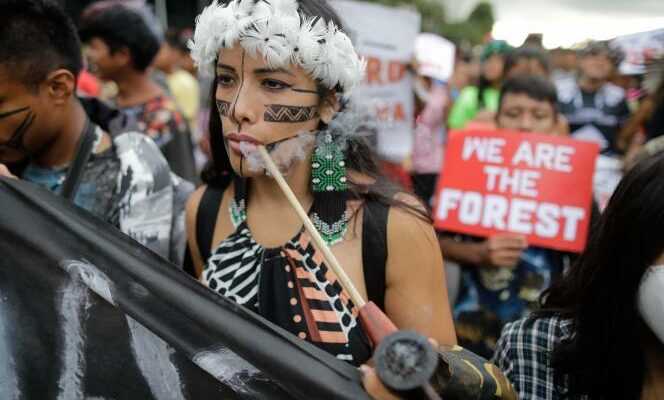As far as the eye can see on the Esplanade de la Funarte in Brasilia, you can only make out a multitude of tents, under which small groups are installed. In the center of this gigantic camp, a large structure houses the plenary assemblies, but dozens of meetings also take place, on the ground, in a circle and without a microphone. Here, young Guarani discuss access to university, further on, the audiovisual collective Midia India gives a workshop on the media. The 18and edition of the Terre Libre Camp, which since April 4 has brought together some 8,000 indigenous people from nearly 200 indigenous peoples, has shown the liveliness of this movement, now united under the aegis of the Association of Indigenous Peoples of Brazil (APIB) . Its coordinator, Sonia Guajajara, had a broad smile, Tuesday April 12, after a week of mobilization: “We are in Brasilia above all to oppose what we call the “malfeasance package”: bills that challenge our rights, which are guaranteed by the Constitution. But the camp is also the time to get together, to decide on the direction of the movement and to share our experiences and our misfortunes. »
Indigenous peoples make up less than 1% of Brazil’s population, but their reservations occupy about 13% of the territory. Illegal gold panning is one of their main concerns. Not only because a bill could legalize this activity, by allowing mining on their land, but also because the complacency, even the complicity, of the authorities is now obvious. According to a report by the Hutukara Yanomami association, presented this week, the damage caused by gold panning increased by 46% last year compared to 2020 on the indigenous territory of the Yanomami, located on the border with Venezuela. “Gold panning has always been our calamity, even when our territory was demarcated thirty years ago.says Junior Hekurari, president of the Yanomami and Ye’kwana Indigenous Health Council. Today, there are nearly 20,000 artisanal gold miners, causing unprecedented malnutrition in children. It’s simple, we no longer have protein to feed ourselves, because mercury pollution [utilisé pour l’extraction de l’or] kills wildlife. »
Also according to the report, more than 16,000 people, or 56% of the Yanomami population, are directly affected by gold panning. “We have denounced this situation to all possible authorities, but they do nothing, while all the evidence is gathered”, laments Junior Hekurari. The report is based on numerous photos and satellite images: airstrips, permanent camps of gold miners, gaping holes in the forest, schools of dead fish and malnourished children.
You have 53.62% of this article left to read. The following is for subscribers only.
